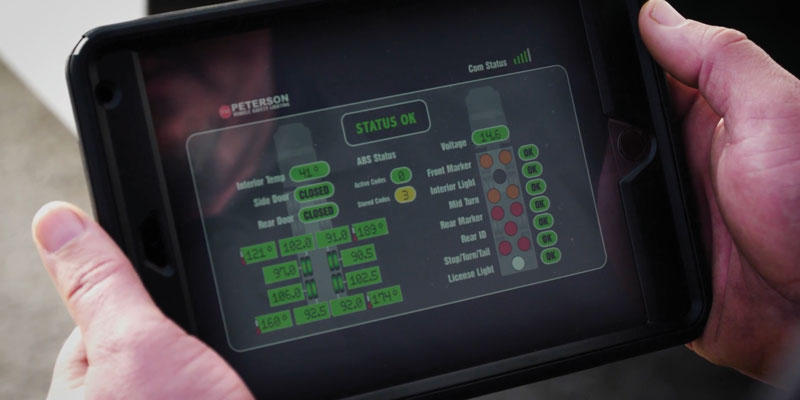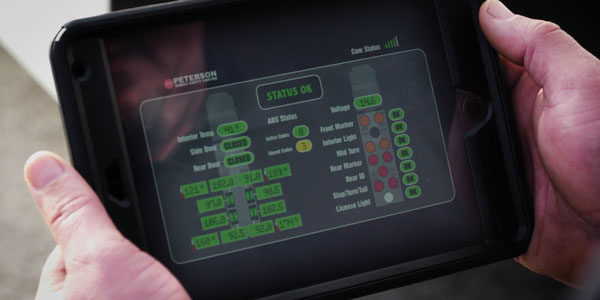
It may still sound like a buzzword, but the fact is that fleet managers can no longer ignore telematics for their operation’s trailers. While early trailer telematics systems provided basic data, new systems can offer more complex information that can be an asset to the management of trailers for a fleet.
“Trailer telematics has gone from a simple rough locating service to a pinpoint, ‘here is my trailer’ locator. It has added cargo sensing to base light out detection and tire pressure status. The ability to see a trailer’s history and status in a user interface has really enabled fleets to reduce their needed trailing asset numbers or relocate their assets for better utilization,” says Gerry Mead, executive director of innovation at Phillips Industries.
Reza Hemmati, vice president of product management for Spireon, agrees that telematics has evolved quickly over the past few years. He says it is a product that fleet managers need to have to keep up in today’s competitive environment.
“In the past few years, the perception of a telematics solution transformed from a single purpose device to a modular connective hub with the ability to integrate with a variety of external sensors or services,” shares Hemmati. “Telematics is no longer a ‘nice to have’ solution, but a ‘need to have’ one in to ensure parity with your competitors. The next step in telematics is to ensure the solution provides not just the location of your fleet, but insight into your fleet’s operation to increase efficiency and profitability.”
So what is some of the data today’s trailer telematics systems can collect?
Sensors can collect data from location information and mileage to cargo status within trailers and remote diagnostic codes. Are the doors open? What’s the temperature inside the trailer? What is the tire pressure monitoring system reporting? These are just some of the many questions that can be answered by today’s trailer telematics systems.
“The most critical information to capture is asset positions relative to the specific facilities that they are visiting, which provides essential insights into how the assets are being utilized and by whom. There is also great value in having visibility into the status of cargo in dry vans, intermodal containers, and refrigerated trailers in order to instruct drivers on when assets are available for pickup, or work with facilities to respond to threats to the condition of loads or to timely delivery,” says Andrew Hicks, lead product manager at Omnitracs.
Andrew Liuzzo, marketing and communications at Truck-Lite, echoes what Hicks had to say, noting that asset location is important to all fleets. He adds that there is plenty of other information that may be of interest to a fleet that a telematics system can help track.
“Trailer and asset location is important to virtually all fleets, but fleets should also seek to capture any trailer component data that helps them maximize their operation’s efficiency by taking a thorough look at their operational shortfalls. If CSA scores are an issue, a fleet may investigate monitoring lighting and tire systems. If cargo theft is an issue, a fleet may invest in a door and cargo monitoring system. No two fleets are alike, so a successful telematics system implementation will be customized to that fleet’s specific needs,” he says.
One major benefit of trailer telematics today is the use of geofencing and sensors that can help alert fleets to potential theft.
“Fleets have used telematics and mobile communication devices for some time to keep tabs on their trucks and trailers, primarily for productivity and safety reasons. Going a step further, the advent of the ‘Internet of Things’ concept in trucks helps fleets improve security for vehicles, drivers and cargo, with smart devices, locks and sensors that do their work in the background,” says Sue Rutherford, vice president of marketing at Orbcomm.
“Examples of information to be captured include cargo status when coupled with cargo sensors; location; door open/close status; geofencing capabilities that alert managers when trailers are moved from pre-designated locations; entry or exit; status change events (when containers are mounted or removed); and historical reporting,” she continues.
Rutherford notes that sensors and electronic seals can even alert a fleet if a container has been tampered with by cutting into the roof, walls or floor for illicit purposes.
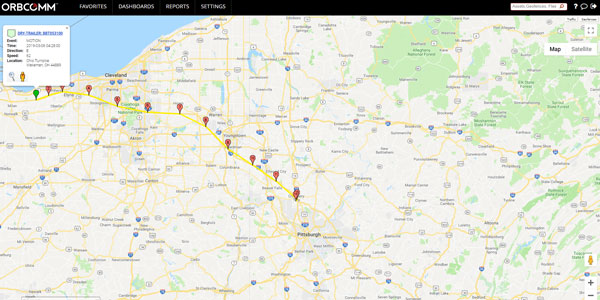
Managing the data
With a large flow of data coming in, how can a fleet manager keep track of all the information?
“The fleet manager or team looking to implement smart trailer technology should work closely with all departments that share in the need for knowledge. Collaborate with colleagues to be sure everyone gets what they need and only what they need. There is more data available than can possibly be digested. Data overload can be paralyzing to someone trying to sort through it to find the results they desire,” shares Allyn Leake, corporate director of heavy-duty sales at Peterson Manufacturing.
It is also advised that fleets find a software solution that can compile the information into actionable items.
“When it comes to asset management, a comprehensive dashboard reduces the margin of error and can only promote efficiency. The trucking industry is seeing a sharp uptick in ‘smart’ trailer components that generate data to help users better monitor and maintain their assets. In order to use this data to improve their operation, fleets will need to depend on a telematics network that can not only provide actionable, event-based data (rather than inundating a fleet with unnecessary data points), but can also consolidate and display diagnostic data from these smart devices,” Truck-Lite’s Liuzzo notes.
“Fleets should specify that the actionable data be reported on immediately and the other data be sorted and used for building the necessary reporting. Data needs to be user-specific and driven by job function,” advises Phillips Industries’ Mead.
Spireon’s Hemmati suggests that the information be presented in a visual way that is easy for a fleet manager to digest.
“The best approach for fleet managers is to employ a solution that goes beyond reporting of raw data and aims to enrich the data to provide key actionable insights. For example, key performance indicators (KPIs) can be presented through different mediums, including interactive maps, live alerts, historical reports or interactive customizable dashboards. The goal in using these visualization tools is to assist fleet managers in sorting through the plethora of data, quickly focus on data that is actionable and take the necessary action to streamline their operations,” he says.
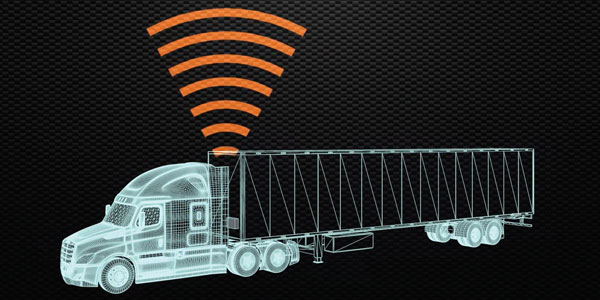
The time to buy in is now
With all the potential and valuable information fleets can learn about their trailers, the time to embrace telematics is now. Everyone Fleet Equipment spoke with said the visibility and insights trailer telematics can give a fleet into their operations is invaluable.
“This data typically results in better communication with drivers, faster and more accurate customer communication, and increased efficiency so they can work on more proactive continuations to the organization, as opposed to firefighting,” shares Mick Milnark, vice president of products at Omnitracs.
“Trailers are the only assets in fleets that are routinely left behind at remote sites for days, weeks or even months at a time. Telematics are essential to being able to locate those assets on a daily basis and understand if and how effectively they’re being used,” explains his co-worker Hicks.
Trailer telematics can serve as the “eyes” for fleet managers tracking their assets from afar.
“Trailer tracking is all about reducing the time that vital information takes to reach the people who need to know it. Whether it’s the driver or the fleet manager, delays can impact safety, customer satisfaction, and the company’s bottom line in a number of areas: road safety, risk mitigation, asset utilization and security, CSA violations and customer communication. All of these areas require knowing where a trailer is, what it’s carrying, who has had access to that cargo, how many miles that trailer has traveled, and the trailer’s current operational state—including damage and malfunctions, preventive maintenance, and related equipment such as reefer units,” shares Peterson’s Leake.
“Implementing a trailer telematics solution is essential for fleet managers to gain visibility into their fleet operations and increase efficiency and profitability for their business. All of the key ROI areas such as reducing violations, improving asset health, increasing utilization, etc. are important drivers for a telematics solution,” Spireon’s Hemmati says.
Hemmati shares that data provided from telematics systems can help fleets respond quickly to operational issues or CSA violation; assess and improve trailer utilization and balance their assets; create an asset maintenance program that reduces cost of ownership and keeps their trailers on the road; and use key information such as cargo status and detention reports to properly charge their clients.
“You can’t manage what you can’t see. Visibility is key to managing the operations of your fleet. The ability to locate equipment in transit and in-facility using GPS technology with geo-fencing is the foundation to everything,” says Orbcomm‘s Rutherford.
“[The data] provides actionable insight. It takes the guesswork out of their daily operations and alerts them to potential issues in real time so that they can keep ahead of the problem. Data can give customers visibility and updated information to improve business relationships. They can monitor, track and control in real time where their vehicles are and the performance of their fleets,” she continues.
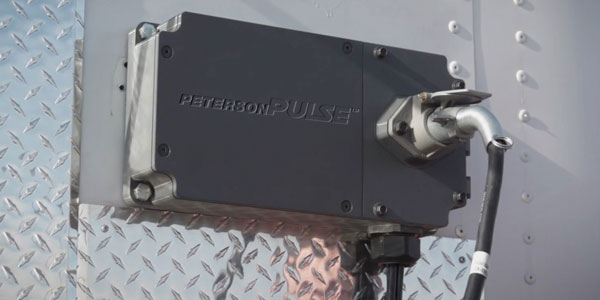
Selecting the right telematics product
“No two fleets are the same, so telematics solutions should be just as unique. Before deciding on a trailer tracking solution, fleet managers should thoroughly assess their areas of need and consider which option can best optimize their fleet’s performance. The best solution will be tailored to their specific concerns, able to seamlessly integrate into their operation and offer both ease of installation and ease of use,” shares Truck-Lite’s Liuzzo.
So what are some things fleets should consider when choosing a telematics provider?
Make sure your fleet is thinking about data ownership—take a look at the software terms of service to learn who owns the data gathered from these solutions. Whether you own the data or not, make sure that you’re able to do what you need to do with it. If you have a service provider that isn’t open to working with other parties to accomplish your goals, you might want to think about pulling your data and finding another partner.
Other points to consider are the longevity/reliability of the provider; what services are offered; if it’s cloud- or app-based; and how the system is mounted to the trailer.
“A great telematics solution provides more than just the location of the assets or raw data points. Instead, it can provide the right tools and insights to drive efficiency and profitability. Critical data points should be captured and packaged in reporting and alerting tools that help drive use cases around utilization, asset health management, detention, etc.,” shares Spireon’s Hemmati. “Furthermore, the telematics solution should support a mixed fleet operation with various assets such as dry-van trailers, reefers, flatbeds, and chassis, using a robust and modular hardware solution that can be extended with support for a variety of external sensors such as door, temperature and cargo sensors.”
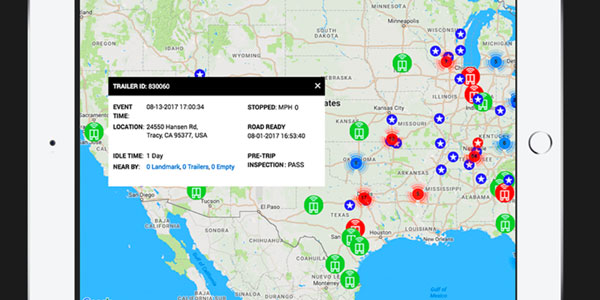
Looking to the future
As technology evolves, trailer telematics will only become more sophisticated. Buying in now will make sure your fleet isn’t falling behind in the future.
“As the thirst for instantaneous satisfaction continues to evolve in the eCommerce-driven retail environment, the demand for visibility and efficiency will need to be more transparent in the goods transport and delivery process. Trailer telematics is the only way to drive this need into the transportation mode,” says Phillips Industries’ Mead. “Trailer technology will be reimagined. The old dumb box sitting on a lot or a dock will become a smart treasure trove of streaming information. It will provide a clear status update from location, load status to brakes lights and tire health status. It will provide a clear pinpoint status of a shipment and provide an expected delivery window.”
Future applications may include the tracking of cargo at the pallet level, as well as the increased usage of trailer data with other fleet management systems to improve driver services and automate dispatching decisions, shares Omnitracs’ Hicks.
Artificial intelligence (AI) may also come into play.
“Fleet managers will begin to realize the ROI of trailer tracking systems in many areas, including maintenance, asset utilization, risk management, vehicle security and contents security. Once these advantages are fully realized by the industry, I have no doubt that the raw data available from this tracking infrastructure will be leveraged to develop other capabilities we haven’t even considered yet, such as automatic maintenance part ordering/delivery, or enhanced AI methods of optimizing scheduling and payload distribution,” Peterson’s Leake says.
“Fleets will be able to gather more advanced data points from trailer telematics devices and integrated component sensors. These data points can be interpreted and processed with new machine learning and artificial intelligence technologies and presented to customers using various reporting, dashboarding or alerting tools that make the right insights available to them around their business operations. Customers could learn new and interesting facts around their daily operational efficiency, utilization and asset health for their trailer fleet, and be presented with prescriptive and predictive insights that help them improve their performance in these areas,” says Hemmati.

